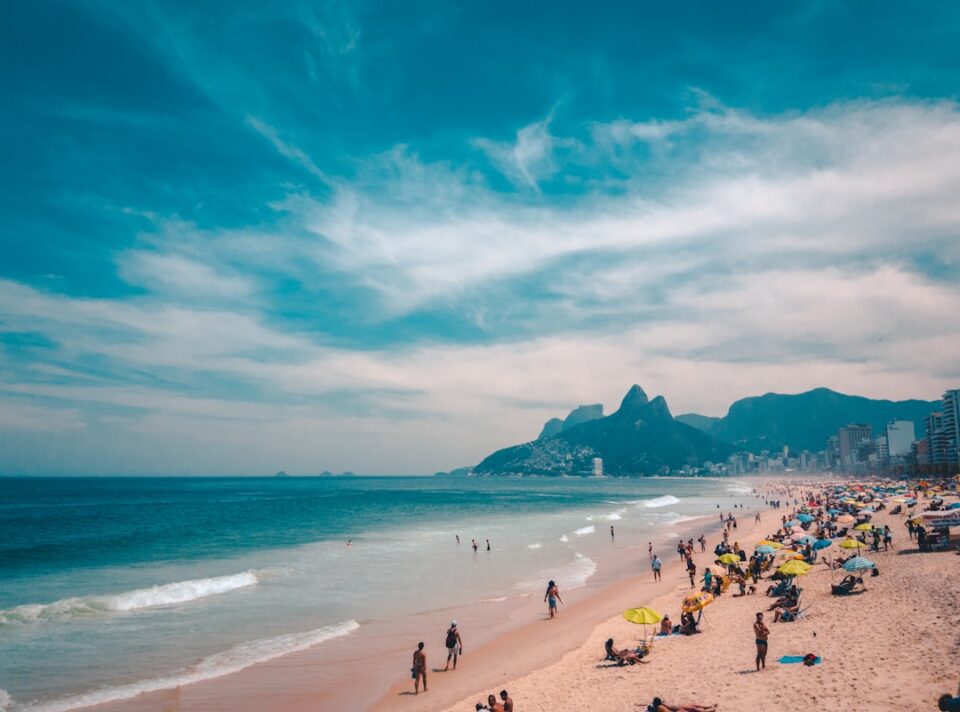Rio de Janeiro is a city full of vibrant culture, stunning beaches, and breathtaking natural landscapes. As a tourist or even a resident, navigating the bustling streets and bustling crowds can be overwhelming at times. However, the city’s public transportation system is a convenient and affordable way to get around and explore all that Rio has to offer.
In this guide, we will break down the different modes of public transportation in Rio de Janeiro, including buses, metro, and ferries, to help you navigate the city like a pro.
Bus System:
The bus system in Rio de Janeiro is extensive and covers almost every corner of the city. With over 440 bus lines and thousands of buses running daily, it is one of the most popular modes of transportation for locals and tourists alike.
To take a bus in Rio, you will need to purchase a Bilhete Único card, which is a rechargeable smart card that can be used on all forms of public transportation in the city. The card can be purchased and recharged at metro stations, bus terminals, and other designated locations.
Each bus route is assigned a number and color, making it easy to identify which bus to take to reach your destination. The buses are equipped with GPS tracking, so you can use mobile apps like Moovit or Google Maps to track the bus in real-time and plan your journey accordingly.
While the bus system can be a bit crowded during peak hours, it is a cost-effective way to get around the city and see all of the sights Rio has to offer.
Metro:
The metro system in Rio de Janeiro is modern, efficient, and a great way to avoid the city’s infamous traffic jams. The metro has two main lines, Line 1 (Orange) and Line 2 (Green), that connect the city center with the northern and western neighborhoods.
The metro operates from 5 am to midnight on weekdays and weekends, with trains running every 3-5 minutes during peak hours and every 7-10 minutes during off-peak hours. The stations are equipped with escalators, elevators, and platform screen doors for passenger safety.
To use the metro, you will need to purchase a Bilhete Único card or a single-ticket at the ticket counter or vending machines located at the stations. The metro is clean, safe, and air-conditioned, making it a comfortable way to explore the city without the hassle of traffic.
Ferries:
If you want to explore the beautiful Guanabara Bay and visit the nearby islands, taking a ferry is a must. The ferry system in Rio de Janeiro connects the city with Niterói, Paquetá, and other nearby destinations, offering a scenic way to travel across the bay.
The ferry terminal is located at the Praca XV de Novembro in the city center, and ferries run regularly throughout the day. The ticket prices are reasonable, and the ferries offer stunning views of the city’s skyline, Sugarloaf Mountain, and the iconic Christ the Redeemer statue.
Other modes of Transportation:
In addition to buses, metro, and ferries, Rio de Janeiro offers other modes of public transportation, including BRT (Bus Rapid Transit), tram, and taxis. The BRT system is a high-speed bus network that connects the city center with the western and northern neighborhoods, providing a fast and efficient way to travel long distances.
The tram, known as the Santa Teresa tram, is a historic streetcar that runs through the charming neighborhood of Santa Teresa, offering a unique and nostalgic way to explore the city. Taxis are also readily available in Rio and can be hailed on the street or booked through ride-hailing apps like Uber.
Tips for Using Public Transportation in Rio de Janeiro:
– Plan your route in advance using mobile apps like Moovit or Google Maps to avoid getting lost or wasting time waiting for the bus or metro.
– Avoid peak hours if possible to minimize crowds and long wait times.
– Keep your belongings secure and be mindful of pickpockets, especially in crowded areas like buses and metro stations.
– Learn a few basic Portuguese phrases to communicate with locals and ask for directions if needed.
– Be patient and flexible, as delays and unexpected changes in the schedule are common in a bustling city like Rio de Janeiro.
Overall, Rio de Janeiro’s public transportation system is a convenient and affordable way to get around the city and explore all that it has to offer. Whether you’re taking a bus to Copacabana Beach, riding the metro to Maracanã Stadium, or cruising on a ferry across Guanabara Bay, the city’s diverse modes of transportation will help you navigate Rio like a pro. So grab your Bilhete Único card and get ready to explore all the wonders of Rio de Janeiro!


